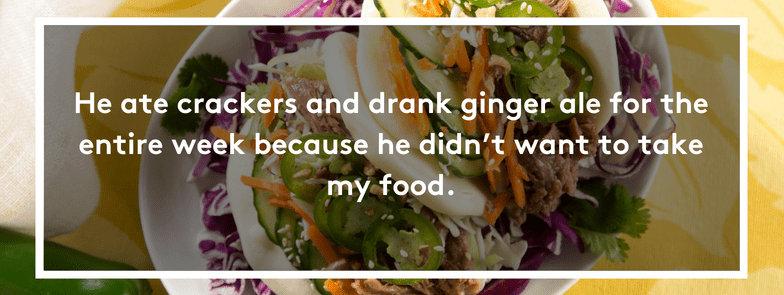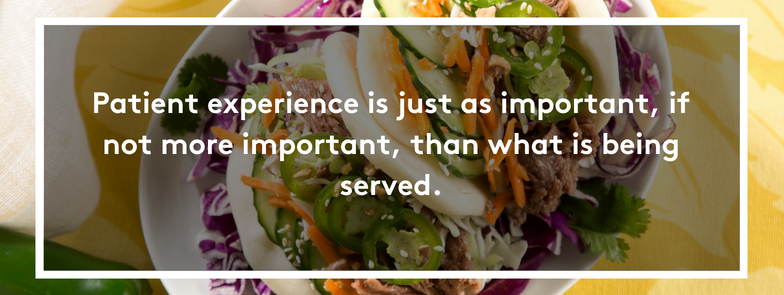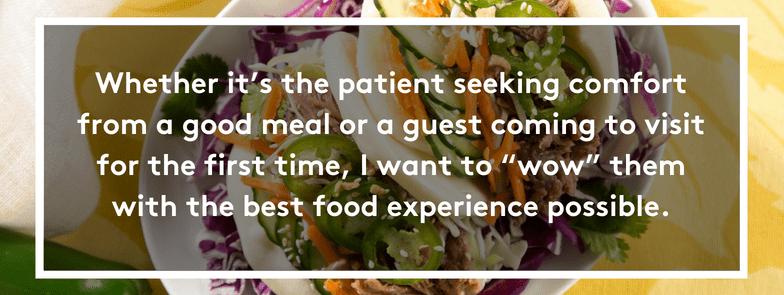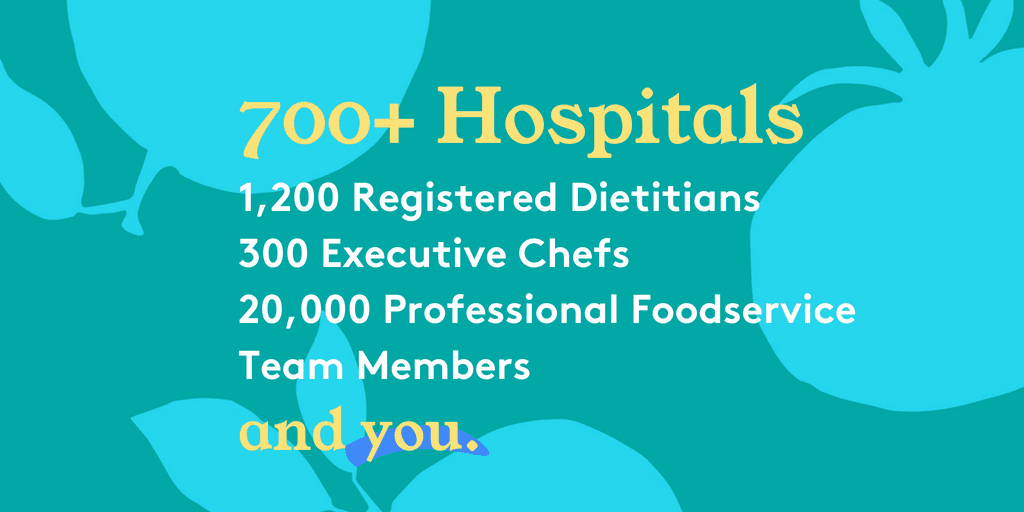Changing the Perception of Hospital Food
By: Laura Kedroff | Executive Chef, Morrison Healthcare
My First Experience with Hospital Food…and My Husband’s
I experienced hospital food for the first time after the birth of my son in 2011. Because of some complications following childbirth, I was in the hospital for one week, so I had plenty of opportunities to sample the menu. To my surprise, the food was excellent, and the service was even better. The hospital offered Dining on Call, so whenever I picked up the phone, food would magically appear – fresh fruit, fresh salads, pretty much anything I wanted.
Unfortunately, my husband’s experience in the same hospital’s café was just the opposite. The service was so poor that he nearly stopped eating there. Had he not been so dedicated to staying with me the entire week, never leaving my side, except to buy a change of clothes, he likely would have gone offsite to get a meal. I’ll always remember how badly I felt when he returned from the café distraught and starving.
The nurses allowed him to sleep in the second bed in my room. So, I started ordering extra food on my patient tray, but he ate crackers and drank ginger ale for the entire week because he didn’t want to take my food.

Reshaping Patient’s Perceptions of Hospital Food Today
Even now, seven years later, that experience has an impact on the food I serve our patients and guests. I’ll never forget the first time I made a real difference for a patient.
Shortly after I started this position in 2014, one of the patients was extremely upset about his meal. It was the first time a patient complained so vigorously, so with some trepidation, I went to meet him. I fully expected to meet an irate man looking to vent his frustrations on a humbled chef.
It turned out he had owned and operated a restaurant for his entire career. It became clear that while he didn’t like the meal he received, he didn’t understand that he could order another entrée. I worked with him on the food we could serve and went to visit him every day. I told him the same story I’ve told many other patients: I have 1,000 items in my inventory, and I’m going to find something you like.
I was able to change his perception of hospital food. By the end of his stay, I had met his entire family, and he introduced me to his sons as his “personal chef.”
More important, I learned a valuable lesson: Patient experience is just as important, if not more important, than what is being served.

Food Quality, It Matters Too
When it comes to the quality of our food, I’ve learned how to change the perception in many ways. When I came to Morrison, my perception of hospital food was the same as anyone else’s. I thought the taste would be bland and there would be little flavor. In short, not very exciting stuff!
But I quickly learned it’s not that way. We make much of our food from scratch, and we have plenty of opportunities to make healthy, nutritious food that tastes good.
I’ve also been inspired by regional executive chef Fred Scherger, who has taught me that attention to details can have a significant impact on the perception of hospital food. His tips begin in the kitchen. For example, instead of carving a turkey right after it’s come from the oven, let it rest for 10 minutes. This short rest will give the bird its proper color and make it easier to slice.
He’s also given me tips about food presentation. Rule number one is that first impressions are everything, so we need to make sure the entrée is in the center of the plate and vegetables are bright and attractive to the eye. From the patient’s perspective, it should look like a meal in a restaurant.
Food Fit for Foodies
On the retail side, I’ve been able to change the perception of hospital food through the introduction of “Foodie Fridays.” These are upscale meals served at lunchtime at premium prices, such as prime rib, lobster mac and cheese and crab cakes.
Not long ago, our dining room was shut down as part of a remodeling. When we reopened, I saw “Foodie Friday” as the perfect opportunity to help rebrand the café and show guests and visitors that we can cook and serve high-quality meals.
We offer Prime Rib for $11.99 plus $2 more for a starch and a vegetable. We roast the ribs whole in the morning, and sometimes we have a carving station in the café. We’ve also serve Salmon Oscar. We make our own crab cakes and place them on top of salmon fillets and asparagus for $10.99.
Momentum has been building for Foodie Fridays; we have several visitors who are now regular Friday customers. No one can believe they are eating out at a hospital for a premium meal!
Whether it’s the patient seeking comfort from a good meal or a guest coming to visit for the first time, I want to “wow” them with the best food experience possible. By combining top-notch food quality with superb patient experience, we can not only change people’s opinions on hospital food but make a difference in their lives.

Celebrating Our Chefs

The success of Morrison and Compass Group is founded on delicious food and the great people who make it. Compass Group is the world’s largest employer of chefs, making our culinary talent the Heart of the House. This August we will celebrate Chef Appreciation Week (August 13-17) to recognize the incredible people behind the food. Join us in celebrating them by posting why you #LoveYourChef on social media.
Join the Morrison Healthcare Family
Looking for meaningful work helping people? Do you want to marry your passions and serving others? Check out available team member or management opportunities to join the Compass One Healthcare and Morrison Healthcare family. We believe in the Power of Food to change lives and are proud of the opportunities we have each day to help people and serve alongside world-class clients.
Morrison is a proud part of Compass One Healthcare and Compass Group USA.





